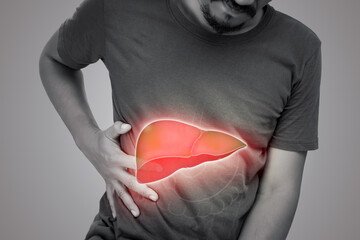Understanding Nonalcoholic Fatty Liver Disease
Nonalcoholic Fatty Liver Disease (NAFLD) is a common condition that occurs when fat builds up in the liver of individuals who drink little to no alcohol. This condition can range from simple fatty liver (steatosis) to more severe forms such as Nonalcoholic Steatohepatitis (NASH), which can lead to liver fibrosis, cirrhosis, and even liver cancer. NAFLD is increasingly recognised as a significant public health issue, particularly in Western countries.
Causes and Risk Factors:
NAFLD is primarily linked to metabolic syndrome, which includes conditions like obesity, type 2 diabetes, hypertension, and dyslipidaemia. Other factors contributing to NAFLD include genetic predisposition, poor diet, and sedentary lifestyle. Insulin resistance plays a crucial role in the development of NAFLD, causing increased fat accumulation in liver cells. Understanding these risk factors is vital for prevention and management.
Symptoms and Diagnosis:
Most people with NAFLD do not exhibit noticeable symptoms, especially in the early stages. However, as the disease progresses, individuals may experience fatigue, abdominal discomfort, and jaundice. Diagnosis typically involves blood tests showing elevated liver enzymes, imaging studies like ultrasound or MRI, and sometimes a liver biopsy. Early detection is essential for effective management and prevention of complications.
Treatment and Management:
There is no specific medication approved for NAFLD, but lifestyle changes are the cornerstone of treatment. Weight loss through diet and exercise is highly effective in reducing liver fat and inflammation. A balanced diet rich in fruits, vegetables, whole grains, and lean proteins, along with regular physical activity, can significantly improve liver health. Additionally, managing underlying conditions such as diabetes and high cholesterol is crucial.
Preventive Measures:
Prevention of NAFLD focuses on maintaining a healthy lifestyle. Regular physical activity, a balanced diet, and weight management are key strategies. Avoiding excessive consumption of sugary beverages and processed foods can also help reduce the risk. Public health initiatives aimed at raising awareness and promoting healthy habits are essential in combating the rising prevalence of NAFLD.
The Importance of Regular Monitoring:
For individuals diagnosed with NAFLD, regular monitoring and follow-up with healthcare providers are crucial. This includes routine blood tests, imaging studies, and liver function assessments to track disease progression. Early intervention can prevent the development of severe liver conditions and improve overall prognosis.
Conclusion:
Nonalcoholic Fatty Liver Disease is a growing health concern, but with proper understanding, lifestyle modifications, and ongoing research, it is manageable and preventable. By adopting healthy habits and staying informed, individuals can significantly reduce their risk of developing NAFLD and its complications. If you suspect you might be at risk, consult your healthcare provider for a thorough evaluation and personalised advice.
More Information...visit here: https://tinyurl.com/3cnjpzy2
